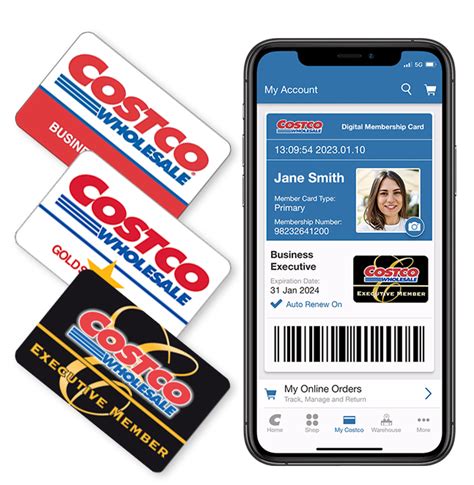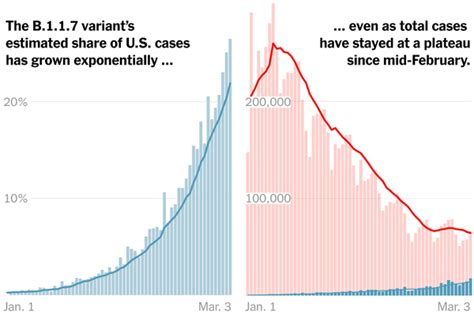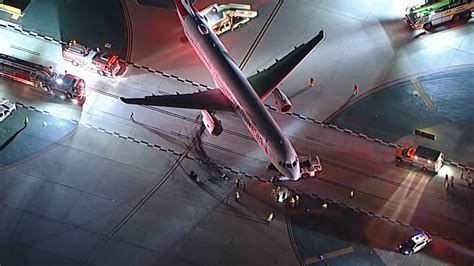
The Transportation Security Administration (TSA) has quietly removed Costco membership cards from its list of acceptable forms of identification at airport security checkpoints, leaving travelers who relied on the card scrambling to find alternative documentation. The change, which appears to have been implemented without a formal announcement, means travelers can no longer present their Costco cards to verify their identity when flying domestically.
Travelers discovering they can no longer use their Costco cards at airport security checkpoints are facing unexpected hurdles and potential delays. The TSA website quietly updated its list of acceptable identification, removing the popular membership card. “TSA officers accept several forms of identification at airport security checkpoints,” the TSA states on its website, but Costco cards are no longer among them.
Acceptable Forms of Identification
The TSA accepts a variety of identification documents. According to the official TSA website, acceptable forms of identification include:
- U.S. passport
- U.S. passport card
- Driver’s license or other state photo identity card issued by Department of Motor Vehicles (or equivalent)
- REAL ID-compliant driver’s license or other state photo identity card
- U.S. military ID
- Permanent resident card
- Border crossing card
- DHS-designated enhanced driver’s license
- Federally recognized, tribal-issued photo ID
- Canadian driver’s license or Indian and Northern Affairs Canada card
- Transportation Worker Identification Credential (TWIC)
- U.S. Citizenship and Immigration Services Employment Authorization Card (I-766)
- U.S. Merchant Mariner Credential
Why the Change?
The precise reason for the TSA’s decision to remove Costco cards from the list of acceptable IDs remains unclear. The TSA has not issued a formal public statement explaining the change. However, security experts suggest several potential factors may have contributed to the decision. These include concerns about the ease with which Costco cards can be obtained or counterfeited, the lack of robust security features on the cards, and the potential for misuse.
Unlike state-issued driver’s licenses or passports, Costco membership cards do not adhere to standardized security protocols and are relatively easy to replicate. This raises concerns about the potential for individuals to use fraudulent Costco cards to misrepresent their identity at airport security checkpoints. The agency continually assesses and updates its security protocols to mitigate emerging threats.
“TSA is continuously updating its procedures to ensure the highest levels of security,” a TSA spokesperson stated.
Impact on Travelers
The change has caused confusion and frustration among travelers who previously relied on their Costco cards as a convenient form of identification. Many travelers were unaware of the policy change until they attempted to use their Costco cards at airport security checkpoints and were turned away. This has led to delays, missed flights, and the inconvenience of having to retrieve alternative forms of identification.
Travelers who discover they do not have an acceptable form of identification may still be allowed to fly, but they will be subject to additional screening procedures. These procedures may include enhanced pat-downs, additional questioning, and verification of personal information. However, there is no guarantee that travelers without acceptable identification will be allowed to board their flight. The final decision rests with the TSA officer on duty.
“If a passenger arrives at the checkpoint without acceptable identification because it is lost or has been left at home, he or she may still be allowed to fly,” the TSA states. “The TSA officer will ask the passenger to provide other information to verify identity, if possible, and compare that information to secure databases. Passengers who are cleared through this identity verification process will be allowed to enter the screening checkpoint. Those who cannot verify their identity will not be allowed to enter the screening checkpoint.”
REAL ID Act
The TSA’s decision to tighten identification requirements comes amid ongoing efforts to enhance security standards across the United States. The REAL ID Act, passed by Congress in 2005, establishes minimum security standards for state-issued driver’s licenses and identification cards. The act aims to prevent terrorists and other criminals from obtaining fraudulent identification documents.
The REAL ID Act requires states to incorporate specific security features into their driver’s licenses and identification cards, such as anti-counterfeiting measures, tamper-resistant materials, and biometric data storage. These features make it more difficult for individuals to create or obtain fake identification documents.
The deadline for full enforcement of the REAL ID Act has been extended multiple times, but the current deadline is May 7, 2025. After this date, federal agencies, including the TSA, will only accept REAL ID-compliant driver’s licenses and identification cards as proof of identity for domestic air travel.
Alternatives to Costco Cards
Travelers who previously relied on their Costco cards for identification will need to find alternative forms of identification that are accepted by the TSA. The most common and widely accepted forms of identification include:
-
Driver’s License or State-Issued ID: A valid driver’s license or state-issued identification card is a readily available option for most travelers. Ensure that the license is not expired and meets the requirements of the REAL ID Act.
-
Passport: A valid U.S. passport or passport card is another universally accepted form of identification. Passports are particularly useful for international travel but can also be used for domestic flights.
-
Military ID: Active duty and retired military personnel can use their military ID as a valid form of identification at airport security checkpoints.
-
Permanent Resident Card: Lawful permanent residents of the United States can use their permanent resident card (Green Card) as proof of identity.
Tips for Smooth Airport Security Screening
To ensure a smooth and efficient airport security screening experience, travelers should keep the following tips in mind:
-
Check TSA Guidelines: Before traveling, review the TSA’s website for the most up-to-date list of acceptable forms of identification and any specific security requirements.
-
Have Identification Ready: Keep your identification readily accessible, such as in a wallet or travel document holder, to avoid delays at the security checkpoint.
-
Arrive Early: Arrive at the airport well in advance of your scheduled departure time to allow ample time for security screening.
-
Cooperate with TSA Officers: Follow the instructions of TSA officers and be prepared to answer any questions they may have.
-
Declare Liquids and Electronics: Remove liquids and electronics from your carry-on baggage and place them in separate bins for screening.
Traveler Reactions and Concerns
The removal of Costco cards from the list of acceptable forms of identification has generated a mixed reaction among travelers. Some travelers expressed understanding of the TSA’s decision, citing concerns about security and the potential for fraudulent use of Costco cards.
However, other travelers voiced frustration and disappointment, particularly those who found the Costco card to be a convenient and readily available form of identification. Some travelers argued that the TSA should have provided more advance notice of the policy change to allow travelers time to prepare.
There are concerns about the lack of transparency and communication surrounding the policy change. Many travelers only discovered the change when they attempted to use their Costco cards at airport security checkpoints, leading to confusion and delays.
The change highlights the importance of staying informed about evolving security regulations and ensuring that you have an acceptable form of identification when traveling. As security threats continue to evolve, it is likely that the TSA will continue to update its security protocols and requirements to maintain the safety and security of air travel.
The Broader Context of Airport Security
Airport security has undergone significant changes since the establishment of the TSA in the wake of the September 11, 2001, terrorist attacks. The TSA was created to enhance security measures at airports across the United States and to prevent future terrorist attacks.
Since its inception, the TSA has implemented a range of security measures, including enhanced screening procedures, increased security personnel, and advanced technology. These measures have significantly improved the security of air travel, but they have also led to longer wait times and increased scrutiny for travelers.
The TSA faces ongoing challenges in balancing the need for enhanced security with the desire to provide a convenient and efficient travel experience. The agency is constantly working to improve its security protocols and to streamline the screening process while maintaining the highest levels of security.
Historical Perspective
Prior to the creation of the TSA, airport security was primarily the responsibility of private security companies hired by individual airlines. This system was criticized for its lack of standardization and oversight, as well as its vulnerability to security breaches.
The September 11 attacks exposed significant weaknesses in the existing airport security system and highlighted the need for a more comprehensive and coordinated approach to security. The creation of the TSA marked a significant shift in the way airport security was handled in the United States.
Future of Airport Security
The future of airport security is likely to involve greater use of technology, such as advanced imaging technology and biometric identification systems. These technologies have the potential to improve the efficiency and effectiveness of security screening while reducing the need for manual inspections.
The TSA is also exploring the use of artificial intelligence and machine learning to identify potential security threats and to improve the overall efficiency of airport security operations. These technologies could help to automate certain tasks, such as baggage screening and passenger profiling, freeing up security personnel to focus on more complex and high-risk situations.
The evolution of airport security will continue to be driven by emerging threats and technological advancements. The TSA will need to remain vigilant and adaptable to ensure that it is able to effectively address evolving security challenges.
Alternatives if You Forget Your ID
Even if you forget your ID, the TSA has a process to verify your identity. This process involves answering questions to verify your personal information and may include additional screening. However, this process is not guaranteed, and it is always best to have a valid form of identification.
Impact on Specific Demographics
The removal of Costco cards may disproportionately affect certain demographics. For example, individuals who do not have a driver’s license or passport, such as some elderly or low-income individuals, may have relied on their Costco cards as a convenient form of identification.
The TSA should consider the potential impact of its policies on vulnerable populations and take steps to ensure that all travelers have access to acceptable forms of identification. This could include working with states to provide free or low-cost identification cards to individuals who do not have a driver’s license.
The change serves as a reminder to travelers to always double-check the TSA’s website for the most up-to-date list of acceptable forms of identification before heading to the airport.
FAQ: TSA Ditches Costco Cards
1. Why did the TSA stop accepting Costco cards as a form of ID?
The TSA has not released an official statement detailing the precise reason. However, security experts suggest it may be due to concerns about the ease with which Costco cards can be obtained or counterfeited, the lack of robust security features on the cards compared to government-issued IDs, and the potential for misuse. These cards do not adhere to standardized security protocols, making them susceptible to replication and fraudulent use, which the TSA aims to prevent.
2. What forms of identification are now acceptable at TSA checkpoints?
The TSA accepts various forms of identification, including U.S. passports, U.S. passport cards, driver’s licenses or other state photo identity cards issued by the Department of Motor Vehicles (or equivalent), REAL ID-compliant driver’s licenses or other state photo identity cards, U.S. military IDs, permanent resident cards, border crossing cards, DHS-designated enhanced driver’s licenses, federally recognized tribal-issued photo IDs, Canadian driver’s licenses or Indian and Northern Affairs Canada cards, Transportation Worker Identification Credentials (TWIC), U.S. Citizenship and Immigration Services Employment Authorization Cards (I-766), and U.S. Merchant Mariner Credentials. Always check the TSA website for the most current list.
3. What happens if I arrive at the airport without an acceptable form of ID?
If you arrive at the airport without acceptable identification, you may still be allowed to fly, but you will be subject to additional screening procedures. The TSA officer will ask you to provide other information to verify your identity, if possible, and compare that information to secure databases. Passengers who are cleared through this identity verification process will be allowed to enter the screening checkpoint. However, there is no guarantee, and those who cannot verify their identity will not be allowed to enter the screening checkpoint. It is best to always have a valid, acceptable form of identification.
4. Is the REAL ID deadline still in effect?
Yes, the REAL ID Act deadline is currently set for May 7, 2025. After this date, federal agencies, including the TSA, will only accept REAL ID-compliant driver’s licenses and identification cards as proof of identity for domestic air travel. Check with your state’s DMV to ensure your license is REAL ID-compliant.
5. Where can I find the most up-to-date information on TSA’s acceptable forms of identification?
The most up-to-date information on TSA’s acceptable forms of identification can be found on the official TSA website (www.tsa.gov). It is recommended to check the website before traveling to ensure you have the correct documentation and are aware of any recent policy changes.
This change underscores the importance of carrying approved identification, such as a driver’s license, passport, or other government-issued ID when traveling. Travelers are encouraged to verify they have acceptable identification before heading to the airport.









